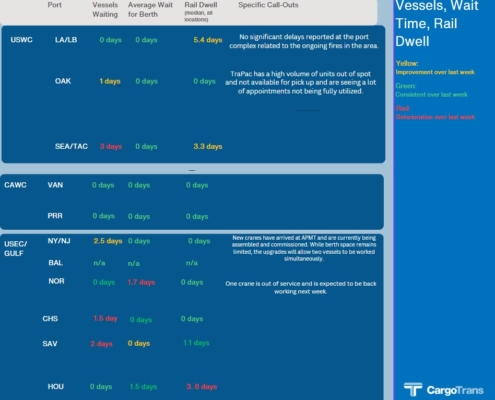MARKET UPDATE: JANUARY 31ST, 2025
CT MarketWatch: Slithering Through Lunar New Year – Tariffs, Alliances & Global Disruptions
Running into 2025 the Global Logistics market continues to navigate a complex landscape of changes, shaped by shifting costs, new alliances, and geopolitical tensions. The recent tariff increases between Mexico, Canada, and the U.S. are adding pressure to North American trade flows, while the formation of the Gemini Alliance—a major carrier collaboration—aims to reshape ocean freight dynamics. Meanwhile, ongoing disruptions in the Red Sea due to regional conflicts continue to impact global shipping routes, forcing carriers to reroute vessels and driving up costs. With transpacific rates fluctuating, air cargo demand surging, and capacity constraints tightening across key trade lanes, shippers must stay agile and plan strategically to mitigate risks and control costs.
MARKET WATCH
Ocean Freight
Transpacific Rate Market and Trends
Transpacific Rates and Market Dynamics:
The transpacific trade lane has experienced increased fluctuations in spot rates due to a combination of seasonal demand and capacity adjustments by carriers. While specific rate figures for January 2025 are not provided, the market remains sensitive to geopolitical events and supply chain disruptions.
Carrier Strategy:
Carriers have been actively managing capacity through blank sailings and strategic alliances to maintain rate stability. The focus has been on optimizing vessel utilization and responding to shifting demand patterns, especially in light of ongoing geopolitical tensions and economic uncertainties.
North and South American Rate Trends
North America:
- The North American container market remains bearish with slow demand and declining volumes, exacerbated by the lead-up to the Lunar New Year. A slow recovery is expected post Lunar New Year, with rates continuing to fall until mid-February.
North Asia to East & West Coast South America (WCSA/ECSA):
Trade between North Asia and the WCSA has remained stable. However, capacity constraints and rising operational costs have led to elevated rates. Shippers are advised to plan shipments well in advance to secure space and manage costs effectively.
European & APAC Updates
Europe:
European ports are facing challenges due to labor strikes and Red Sea Crisis. These disruptions have led to delays and increased costs. Shippers should monitor the situation closely and consider flexible routing options to mitigate potential impacts.
APAC:
East & West Coast North America (ECNA/WCNA):
Rates from Southeast Asia to North America remain stable due to front-loading in December.
Middle East & Indian Subcontinent:
Rates from India to East Coast North America decreased, and there was a decline in West Coast India to Middle East freight rates due to market overcapacity.
Air Freight
Spot Rates:
- Global air cargo spot rates have remained elevated, with a 15% year-on-year increase observed in December 2024. This trend has continued into January 2025, driven by strong e-commerce demand and capacity constraints.
Yearly Trends:
-
- Over the past year, the air freight market has experienced double-digit growth in demand, with a 14-month streak of consecutive increases. While the market remains robust, stakeholders are cautious due to potential geopolitical tensions and economic uncertainties that could impact future performance.
Key Topics to Watch in the Coming Months: Trump Tariffs & The Gemini Alliance
New Tariffs on Canada & Mexico Confirmed – More Tariffs on China Coming?
President-elect Trump has now confirmed significant tariffs and others pending, including:
- (Update) Confirmed 25% tariffs on imports from Mexico and Canada.
- Trump likely to announce tariffs on Canada and Mexico on Saturday.
- Collections will start March 1, sources say.
- Action to curb fentanyl trade, illegal immigration may earn reprieve.
- (Update) 10% Tariff Increase on Chinese goods by February 20th, 2025.
- A 10–20% blanket tariff on all imports.
The tariffs are expected to impact various sectors, including the automotive industry, agriculture, and consumer goods.
Legal Authority for Presidential Tariff Implementation
- Congressional Delegation of Power
Although the U.S. Constitution grants Congress the power to impose taxes, including tariffs, trade laws have delegated substantial authority to the president. This allows for tariff imposition without congressional approval, bypassing typical checks and balances. -
Mechanisms for Tariff Imposition
- Trade Laws (1930s–1970s): Allow the president to impose tariffs to address unfair trade practices. These measures, however, require investigations and public notice periods, making immediate action less feasible.
- International Emergency Economic Powers Act (IEEPA) of 1977: Enables the president to act swiftly against “extraordinary” threats. This mechanism could bypass traditional reviews and public input, allowing rapid implementation, though its scope and legality remain debated.
While imposing tariffs immediately is complex, IEEPA provides a legal pathway for rapid action. However, the economic and diplomatic consequences of such measures require careful consideration.
How the Gemini Alliance aims to Redefine Reliability & Efficiency
In January 2024, Hapag-Lloyd and Maersk announced a long-term operational collaboration named the “Gemini Cooperation,” set to commence in February 2025. This partnership aims to establish a flexible and interconnected ocean network, targeting an industry-leading schedule reliability exceeding 90% once fully implemented.
The Gemini Cooperation will feature a fleet of approximately 290 vessels, with Maersk contributing 60% and Hapag-Lloyd 40%, totaling a combined capacity of 3.4 million twenty-foot equivalent units (TEU). The network will consist of 29 streamlined mainline services and an extensive array of agile, interregional shuttle services, covering key trade routes such as Asia to the U.S. West and East Coasts, Asia to the Middle East, Asia to Europe, and Transatlantic trades.
A notable feature of this collaboration is the reduction in port calls per service, focusing on ports where the partners have operational control to enhance efficiency and reliability. Additionally, due to ongoing safety concerns in the Red Sea, the network will initially route vessels via the Cape of Good Hope, with plans to revert to the Red Sea route once conditions improve.
The Federal Maritime Commission (FMC) has approved the Gemini Cooperation Agreement, which took effect in September 2024. The FMC will monitor the alliance to ensure compliance with regulatory standards.
This strategic partnership between two of the world’s leading shipping companies is poised to set a new standard in maritime logistics, emphasizing reliability, connectivity, and sustainability.
Need Help Navigating the Current Freight Market?
📰 IN OTHER NEWS…
Explosion forces crew to abandon Hong Kong-flagged container ship in the Red Sea
DUBAI, United Arab Emirates (AP) — An explosion has struck a Hong Kong-flagged container ship traveling north through the Red Sea, sparking a major fire that forced its crew to abandon the vessel, shipping industry officials said.
Read More
Maersk not returning to the Gulf of Aden for now.
STOCKHOLM, Jan 24 (Reuters) – Maersk (MAERSKb.CO), opens new tab will continue to divert vessels away from the Gulf of Aden and Red Sea and toward the southern tip of Africa despite Yemen’s Houthis announcing they will curb their attacks on ships, the container shipping giant said on Friday.
Read More
DP World says sea freight prices could fall 20% if Red Sea attacks are curbed
DAVOS, Switzerland, Jan 22 (Reuters) – Ships not linked to Israel could begin returning to the Red Sea in as little as two weeks, DP World’s deputy chief executive said, adding that could see freight prices “come crashing down”.
Read More
Trump set to Launch Canada, Mexico tariffs on M
WASHINGTON, Jan 31 (Reuters) – U.S. President Donald Trump is expected to announce new tariffs on imports from Canada and Mexico that would become effective on March 1, but will include a process for the countries to seek specific exemptions for certain imports, three people familiar with the planning told Reuters.
Read More
Have you met Captain?
Our End-to-End Visibility Platform
Visibility done right so that you can manage compliance, budget and expectations. Empowering you to confidently control your supply chain and deliver happiness to your customers.
We are ready to help
Logistics Solutions at your fingertips
We have team members ready to answer your questions.
Give us a call 516.593.5871 or chat on our website 💬











